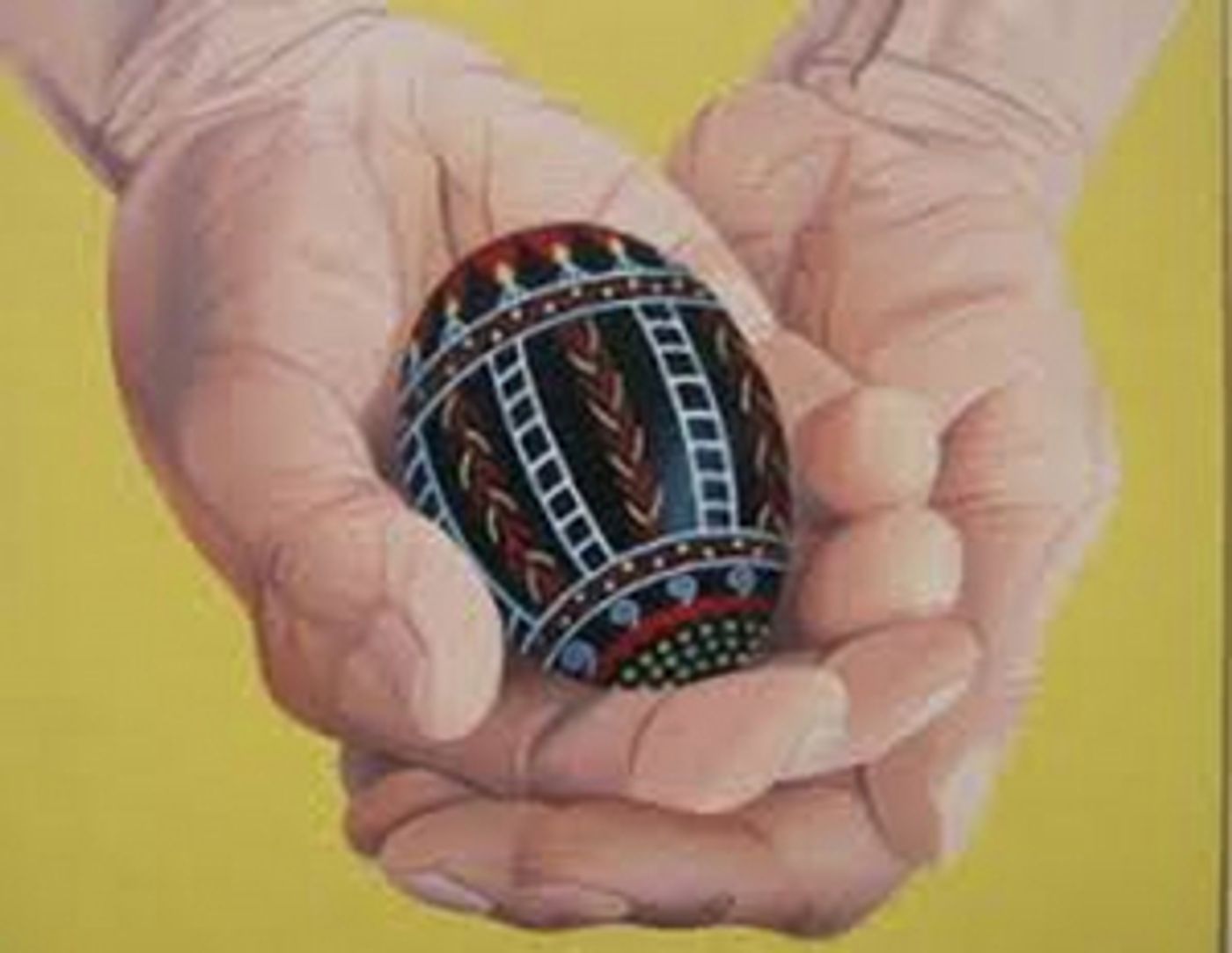Museum of Russian Icons New Exhibitions 'Atomic Alert!' & 'Pysanka: Symbol of Renewal' to Open in March

The Museum of Russian Icons will be presenting two new special exhibitions in the Spring of 2020; Atomic Alert! Confronting "The Bomb" in the New Atomic Age, an exploration of the mid-20th century Cold War era, March 20 - May 6; and Maine-based contemporary artist Lesia Sochor's Pysanka: Symbol of Renewal, inspired by the beautiful tradition of Ukrainian Easter egg painting, March 21 - August 2. A mini-display, Fighting Pencils-Fighting Faith, will be on view March 19-September 20, 2020.
The Soviet Union's detonation of its first atomic bomb on August 29, 1949, thrust the United States into a new and more precarious era. Just four years after celebrating victory in World War II as the only nation with an atomic bomb, Americans now found themselves confronting the probability of an atomic war.
Atomic Alert!: Confronting "The Bomb" in the New Atomic Age, March 20-May 6, explores the government's Cold War era efforts to educate Americans about what to do before an atomic attack, how to react to a sudden, blinding flash, and what action to take in the aftermath of an atomic blast.
Featuring artifacts and interpretation from Michael Scheibach, Ph.D., independent scholar and author, Atomic Alert! offers a unique opportunity to revisit the early atomic age when the world was divided between two atomic-armed adversaries: the United States and the Soviet Union.
A special feature of the exhibition will be a large interactive element called "When the Bomb Falls," which allows visitors to explore the impact of a nuclear blast on a geographic area.
The Museum will be partnering with the Clinton Historical Society throughout this exhibition to explore how the Cold War fits into local history, This partnership will include joint programming and an additional exhibition Clinton in the Cold War at the Holder Memorial building at 210 Church Street in Clinton, MA.
In the exhibition Pysanka: Symbol of Renewal, March 21 - August 2, 2020, the paintings of Maine-based artist Lesia Sochor are narratives told in paint prompted by personal experiences. The Pysanka series evolved from her annual spring ritual of creating intricately decorated Ukrainian Easter eggs known as pysanky. Depicting the symbolic meanings and traditional motifs in oils and watercolors spawned a new path of contemporary expression for this ancient art form. Lesia continues the tradition of Pysanky making, passed down by her Ukrainian immigrant mother. This beautiful, talismanic object is a direct link to her ancestral past and her roots.
Sochor earned a degree in Fine Arts from the Philadelphia College of Art. She co-founded the first art gallery in Belfast, Maine, and started and directed an arts center. She has also taught publicly and privately through residencies and museum workshops for 25 years and illustrated two children's books.
Fightling Pencils-Fighting Faith, A Mini-Display, March 19-September 20, 2020, pulls from the Museum's collection of Soviet anti-religious posters to explore the Soviet State's attempts to tamp down religious beliefs amongst its populace in the 1970s and 1980s. The Fighting Pencil organization was an artist' collective based in Leningrad (present-day Saint Petersburg) which was established in 1939 to create government propaganda throughout World War II. The anti-religious campaign advocated for atheism by highlighting corruption within the church, denouncing superstition, and stirring up fears of Western and foreign influence. Nikita Khrushchev reestablished the organization in 1956, and the group continued producing posters until the early 1990s.
RELATED EVENTS
Exhibition Opening: Atomic Alert! Confronting "The Bomb" in the New Atomic Age
Thursday, March 19, 6:00-8:00pm
Members Free, Nonmembers $15
Register at https://museumofrussianicons.charityproud.org/EventRegistration/Index/3099
Dust off your best "Mad Men" outfit and join us for martinis, manhattans, and all things Cold War. Please RSVP by Sunday, March 15, so we know how much Spam to purchase!
Artist Lecture and Exhibition Opening Reception for Pysanka: Symbol of Renewal
Saturday, March 21, 2:00-4:00pm
Members $6, Nonmembers $12, registration required by Tuesday, March 17
In her opening reception lecture, Ukrainian artist Lesia Sochor will explore the egg as the embodiment of the life principle that is associated with mythical and religious ceremonies from the earliest pagan times. Ancient peoples universally worshiped the sun, and eggs were chosen as ritual objects for these celebrations. In addition to a historical overview of Pysanka origin, Sochor will examine the deep-rooted symbolism capturing the beliefs growing out of the ever-changing yet ever-the-same generation to generation experiences of a people.
Sochor is first and foremost a painter, and she will discuss how the Pysanka, an echo of the past, was the catalyst for a decade long exploration of paintings acknowledging her roots and contemporary self. Part of these beliefs gave the decorated egg talismanic powers of fertility, health, protection, good fortune, plentiful harvests, and hope. Legend has it that as long as Pysanky were decorated, goodness will prevail over evil throughout the world. The designs flourished and grew in the hands of the Ukrainian people and have become an exquisite art form known the world over.
ABOUT THE MUSEUM
The Museum of Russian Icons inspires the appreciation and study of Russian culture by collecting and exhibiting icons and related objects; igniting the interest of national and international audiences; and offering interactive educational programs. The Museum serves as a leading center for research and scholarship through the Center for Icon Studies and other institutional collaborations. It is the only museum in the US dedicated to Russian icons, and it is the largest collection of icons outside of Russia.
Museum hours: Tuesday-Friday, 11am to 4pm; Saturday and Sunday, 11am to 5pm. First Sunday of the month: free admission! Closed Mondays.
Admission: Adults $10, seniors (59+) $7, Students $5, Children (3-7) $5, Children under 3 Free.
more information, please visit museumofrussianicons.org. Follow the Museum of Russian Icons on Facebook, Twitter, and Instagram.
Videos

